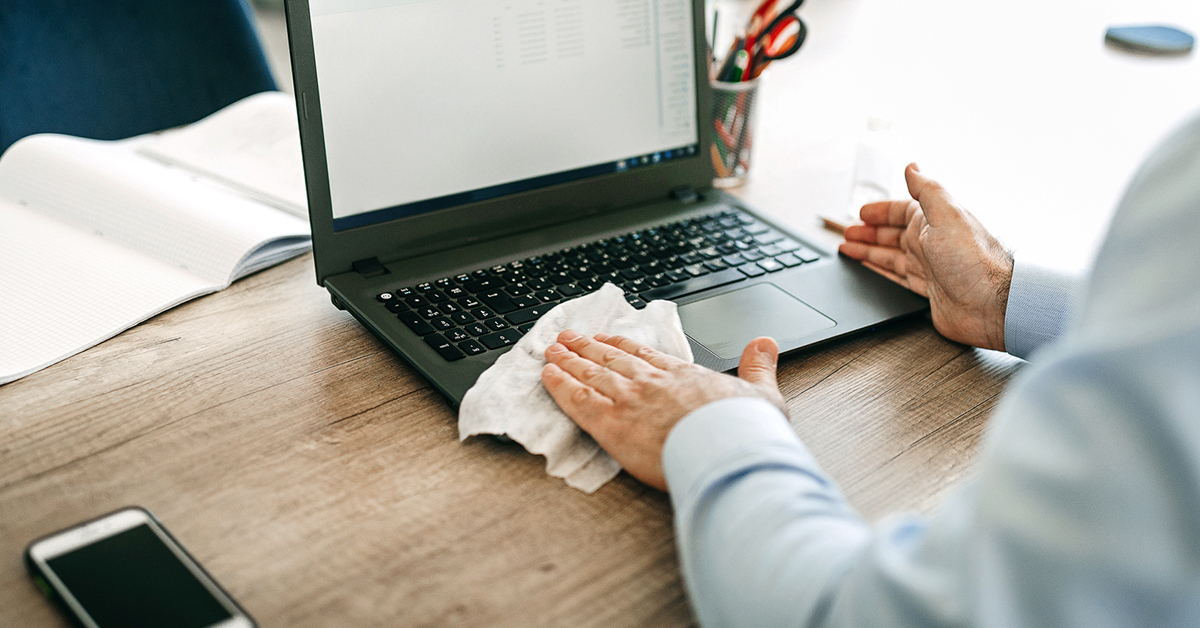
ByMartin Supply •
COVID-19 Cleaning, Disinfecting & Sanitizing Facts You Need to Know
Cleaning and disinfecting products along with sanitizers are a hot commodity these days. For manufacturers and other businesses who need large quantities, securing these items can be a challenge. For the general public, they are often gone as soon as they hit the shelves. Cleaning may seem like a simple chore, but if we aren’t informed about what we should or are cleaning with, we could invite more harm than good. For example, do you know what is considered an effective cleaner or disinfectant for COVID-19? Or, do you know the cleaning products you should never combine? Is your hand sanitizer effective to kill germs? Below are answers that can help you make the right choice and create an environment that protects you and others from COVID-19 and other germs.
Will all surface cleaners get rid of COVID-19?
There are many products you can use to superficially clean hard surfaces, such as warm, soapy water, vinegar-water solution sprays, or even essential oil solution sprays. However, those products have NOT been scientifically proven to effectively disinfect a surface from contaminants such as COVID-19, influenza, norovirus, etc. It’s essential to pay attention to the active ingredients in your cleaning products. Below are common active ingredients found in the CDC and EPA recommended disinfectant cleaning products that can kill many viruses and bacteria:
- Ethanol alcohol (60%-90%)*
- Hydrogen peroxide
- Isopropyl alcohol (60%-90%)
- Quaternary Ammonium
- Sodium hypochlorite
The above is NOT an inclusive list, but it can help guide you as you look for products. You can view the all-inclusive list on the EPA’s website.
Is ok to follow a surface cleaning with another cleaner or disinfectant or mix cleaning products together?
Certain products, which are safe when used alone, can sometimes cause unsafe fumes or other chemical reactions when mixed with other products. Always read the warning and ingredient labels on cleaning products — and if they contain these ingredients, never mix these:
Bleach + vinegar = Chlorine gas
Bleach + ammonia = toxic chloramine gas
Drain cleaner + drain cleaner = possible chemical reaction
Vinegar + hydrogen peroxide = weak acid
Bleach + rubbing alcohol = a chloroform-like compound
Do hand sanitizers need a certain level of alcohol to be effective?
Yes. Hand sanitizers need to reach a certain alcohol level to be effective in killing COVID-19, just make sure you read the label. We already know one of the ways you can get COVID-19 is by touching something that has the virus on it, then touching your mouth, nose, or eyes.
According to the CDC, alcohol-based hand sanitizers are an effective way to remove bacteria. It recommends using one with greater than 60 percent ethanol or 70 percent isopropanol.
This is also echoed by the FDA, as hand sanitizers are over-the-counter drugs regulated by the administration. Sanitizers that meet the FDA’s conditions have a “drug facts” label you can check to see if it has the recommended ingredients and levels.
Martin can help you find the right cleaners, disinfectants and sanitizers for your workplace. Contact your Martin Sales Rep today or call 800.828.8116.

Comments for this post are closed.